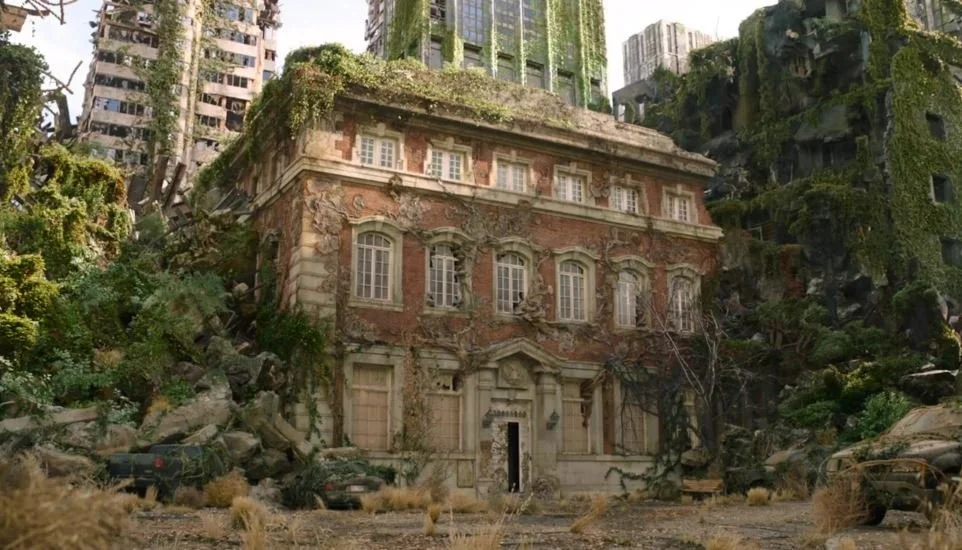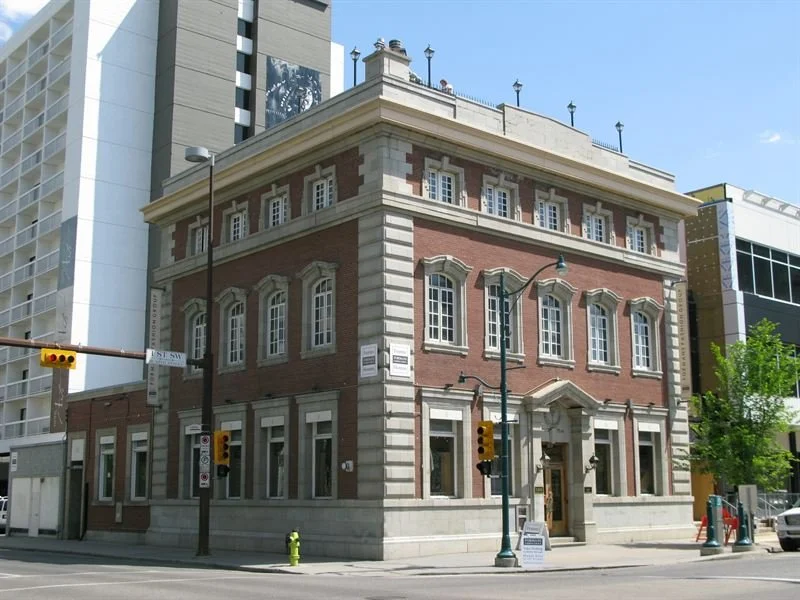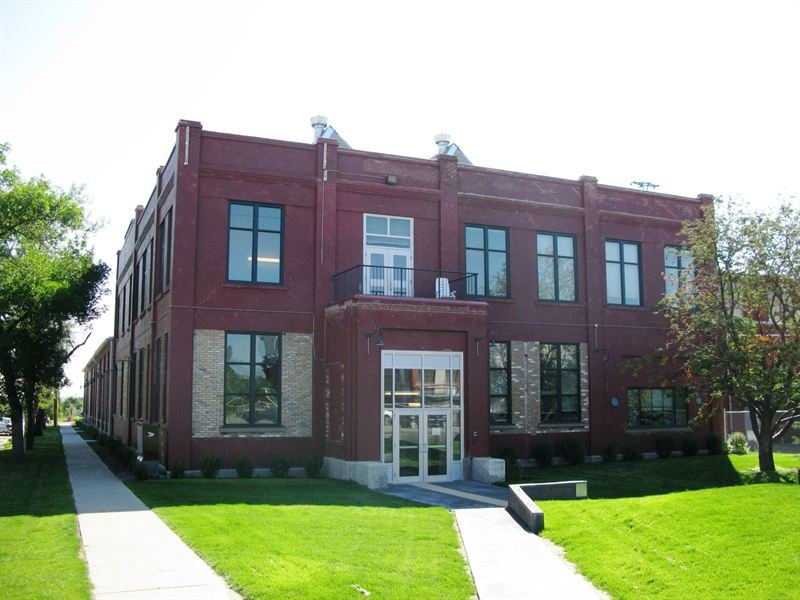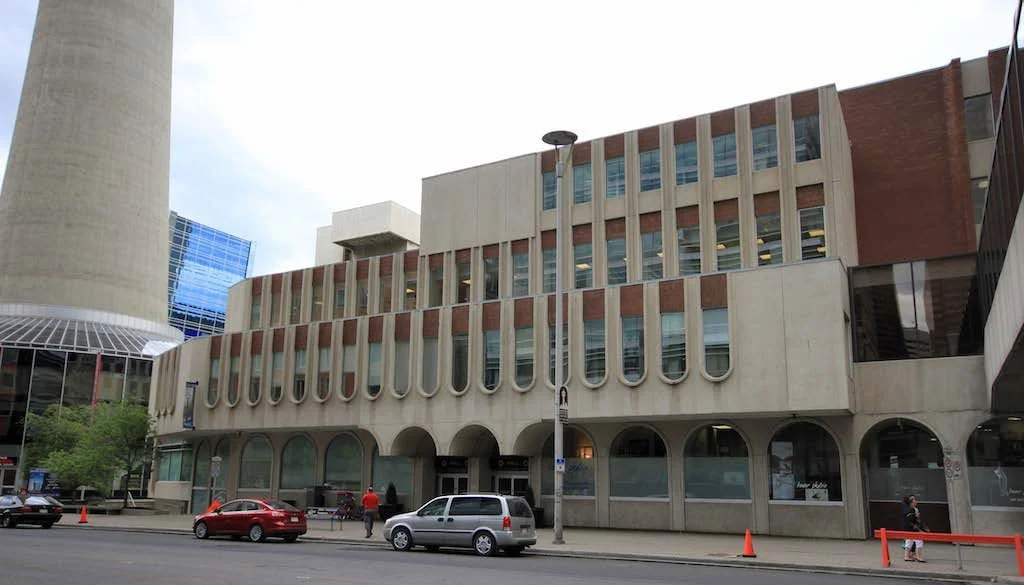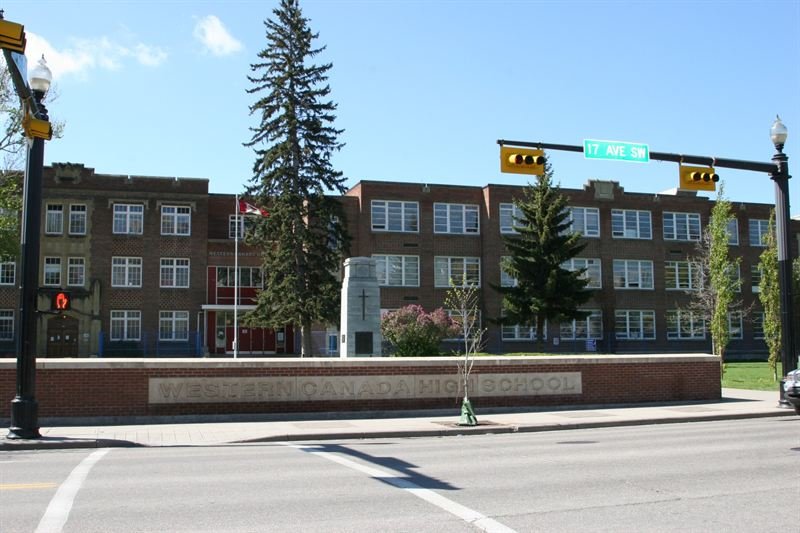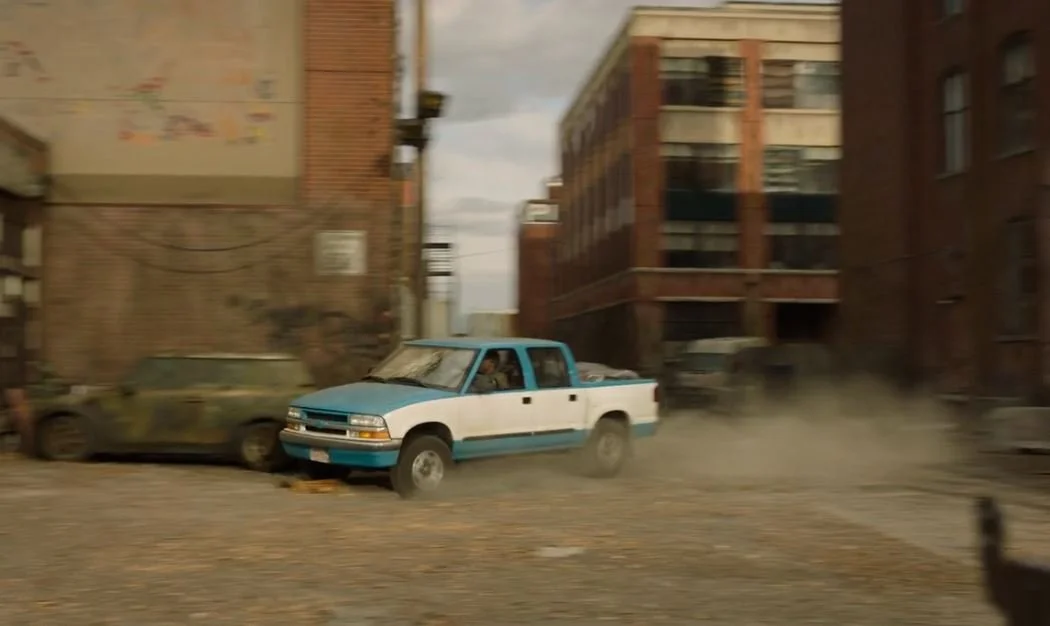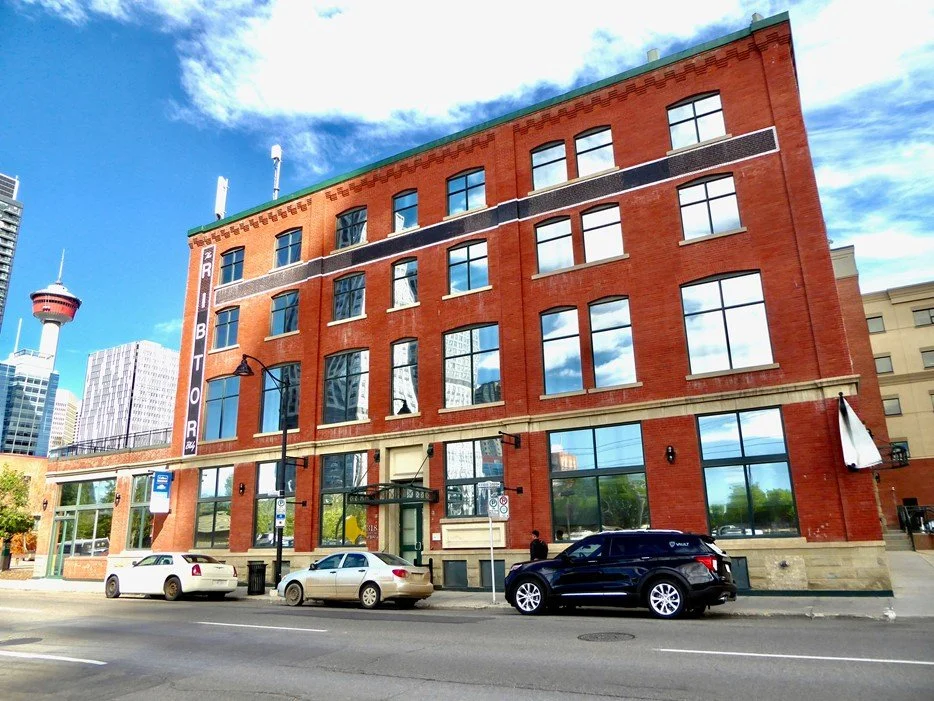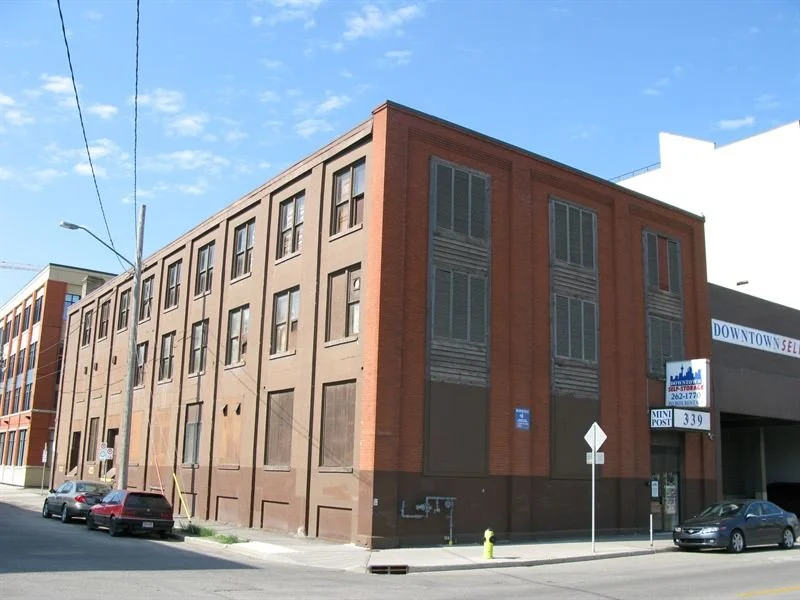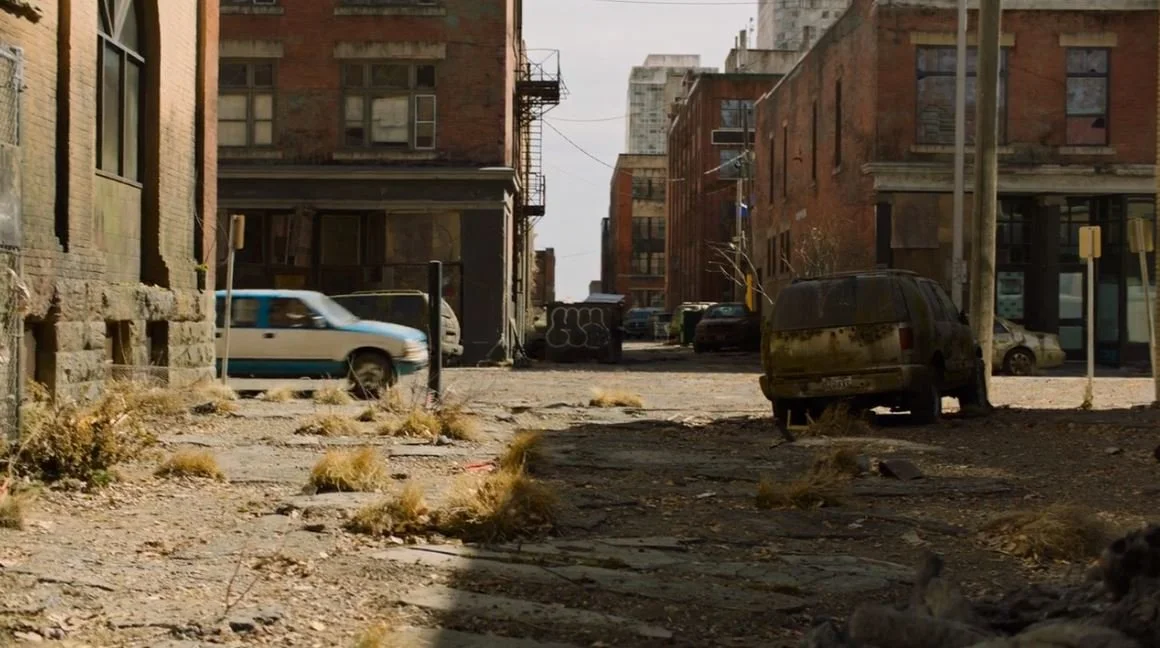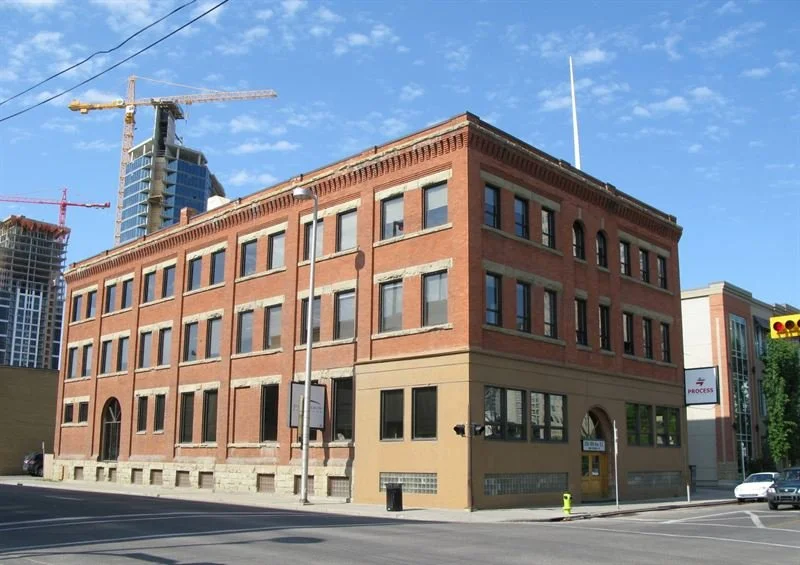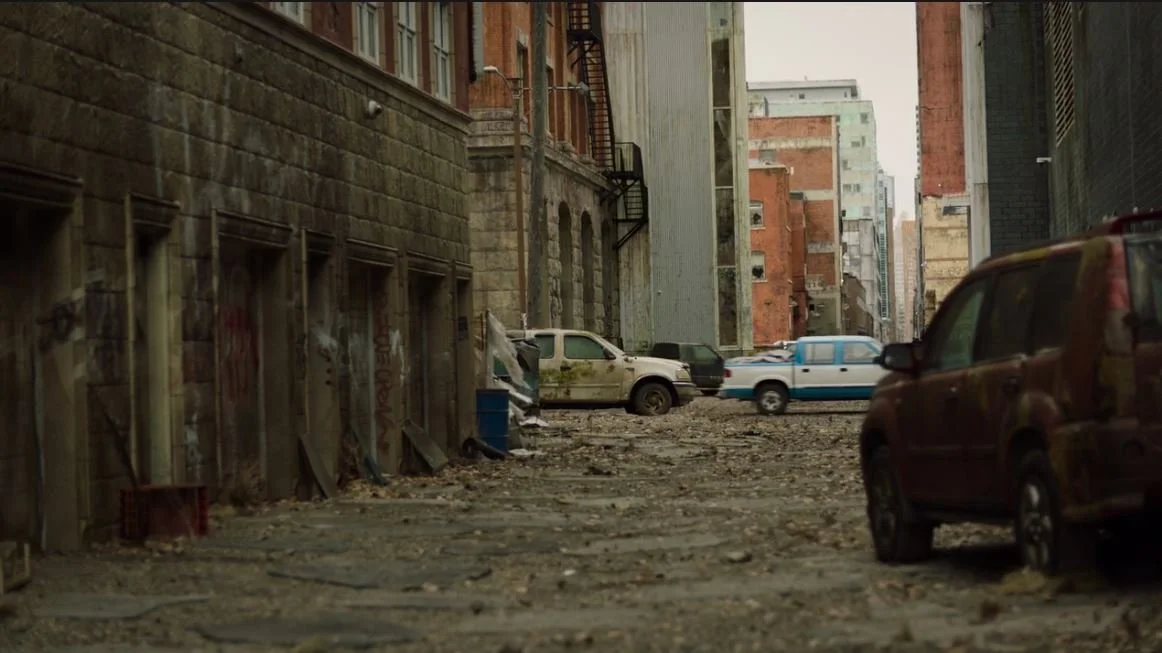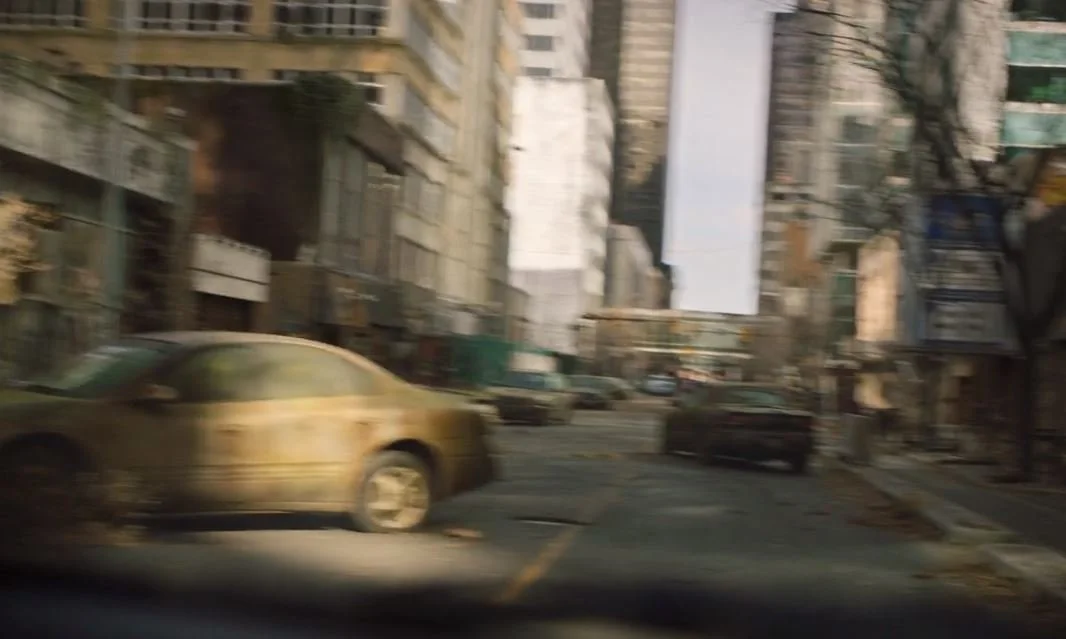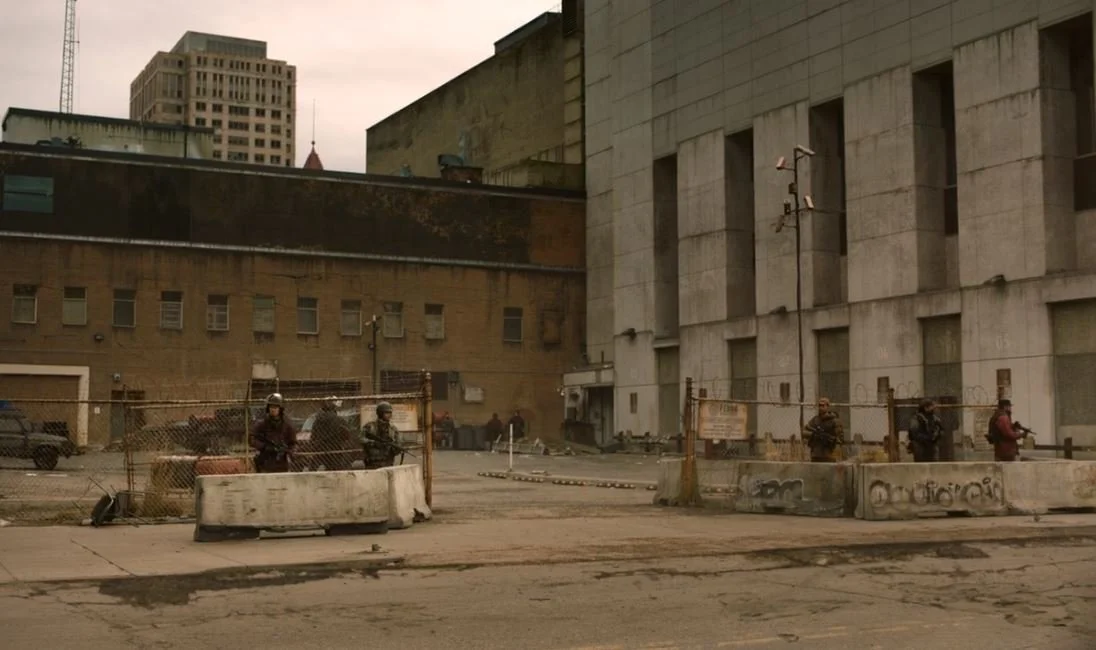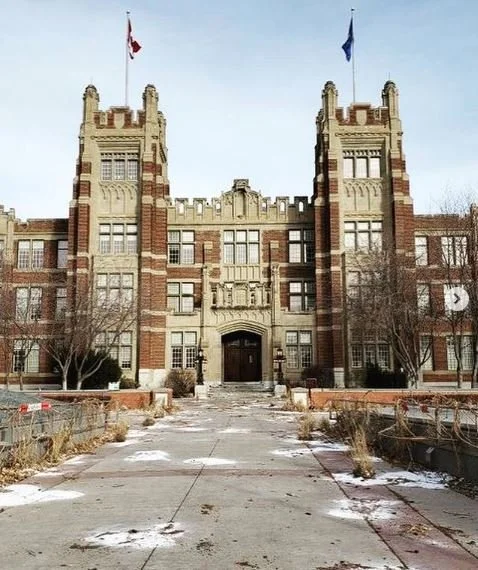Heritage Buildings from Calgary's Inventory featured in HBO's The Last of Us
Calgary has a rich filmmaking history, and the city continues to be one of the top destinations for film and television productions in North America.
HBO’s new series The Last of Us starring Pedro Pascal and Bella Ramsey was shot entirely in Alberta. The series first season is the largest film production in Alberta’s history, and was filmed between July 2021 and June 2022.
Calgary is among the largest film jurisdictions in Canada, and we love spotting Calgary’s unique heritage buildings on the silver screen. Here we explore a list of locations from the Inventory of Evaluated Historic Resources featured (so far) in The Last of Us. Many of these sites have been identified by Travel Alberta in their map of the series’ Alberta filming locations.
The Canadian Bank of Commerce standing in as the exterior of the Bostonian Museum in The Last of Us.
The Canadian Bank of Commerce. Inventory of Evaluated Historic Resources, Heritage Calgary.
This Beltline building located at 1202 1 ST SW served as the exterior for the fictional Bostonian Museum. In Episode 2, Ellie, Joel, and Tess face multiple clickers in the museum, through which they proceed to the Massachusetts State House. It appears that the exterior of the Bank was digitally extended for the set.
The Canadian Bank of Commerce building, designed by V.D. Horsburgh, is a formal and restrained example of the Georgian Revival style in Calgary, and is rare for its use of the style in non-domestic architecture as well as for its terra cotta detailing.
After establishing its presence in Calgary in 1901, the Canadian Bank of Commerce (CBC) enjoyed tremendous growth here under the leadership of Charles Walsh Rowley from 1902-11. The bank's business expanded to meet the needs of the area's growing commerce and industry, and by 1909 the Toronto head office approved a substantial new downtown branch and two new branches in Inglewood and Victoria Park. Rowley was responsible for the construction and management of all three. The new CBC banks were part of a second wave of permanent branch offices across the prairies and were larger and more enduring than those they replaced.
The building is valued for its association with commercial activity for over a century, and with the banking institution for over seven decades. With its prominent corner location on busy commercial corridors, and its impressive classically-inspired façade, the bank is a community landmark.
Dominion Bridge/Riverside Iron Works. Inventory of Evaluated Historic Resources, Heritage Calgary.
Dominion Bridge/Riverside Iron Works
This location at 803 24 AV SE was the site of the built set of the Boston QZ. Production designer John Paino told Vanity Fair “it took a couple of months to build the QZ, all told. Making it all from scratch and making sure that the grout is missing from the brick. Everything was hand-colored. Everything was built and then broken down. The set deck with the millions of wires they ran across the street and all that stuff. That’s really there up to 20 feet. Yeah, it was impressive.”
Riverside Iron Works occupies almost 21 acres of commercial land in the community of Inglewood-Ramsay. Although long associated with heavy industry, the site and its buildings are currently witnessing a revived mixed use by industry and local artisans. Original ties to the property are attributed to the early manufacturing business of Riverside Iron Works, founded by Frederick Lorne Irving in 1913.
Irving first established Riverside Iron Works as a small machine and repair shop, eventually expanding to become a large steel manufacturer who supplied many levels of industry. To help broaden his enterprise, Irving purchased 7 1/4 acres of land in south-east Calgary in 1921 to erect a large foundry to supply the increasing demands of the coal, oil and agriculture industries. The new Riverside Iron Works Limited plant officially opened in 1927.
Considered to be one of the best equipped plants in Western Canada, Riverside Iron Works symbolized the growing importance of Alberta as an industrial province in the Twenties. The progress of Riverside Iron Works was considered to be one of Calgary's most successful business endeavours of the early century; a small operation employing 15 people in 1913 to a leading manufacturer in the West employing over 225 workers in 1927.
Bell Block. Inventory of Evaluated Historic Resources, Heritage Calgary.
The Bell Block served as a filming location for the Boston QZ tenements, interior hallways, stairwell and Apartment 2D.
For well over a century the mixed use commercial-residential building has provided retail / commercial and residential service to Victoria Park and the downtown commercial core.
The Bell Block possesses person value for its developer, namesake and owner from 1909 to 1949, colourful frontier citizen Ralph Alexander Gasgorne Bell (1860-1953), who arrived in Calgary ca1882. After retiring from the NWMP force, he was an agricultural implement dealer and operated stables on 9th AV before building the Bell Block.
The Bell Block is an attractive and prominent example of the red-brick Edwardian commercial buildings that collectively symbolize Calgary’s warehouse district. Although individual proprietors changed frequently, for several decades the eight 25-foot storefront bays housed the same types of businesses: retailers including a barber shop, grocer, confectionary, hardware store and tailor; and wholesalers like import/export and manufacturing agents.
Palliser Square. Inventory of Evaluated Historic Resources, Heritage Calgary.
Palliser Square served as a filming location for the Boston QZ and an abandoned subway station.
Palliser Square is valued as a symbol of the 'New Heart of Downtown Calgary', and was a direct result of urban renewal initiatives to redevelop the downtown core in the 1960s.
The redevelopment of Calgary's CPR depot lands was conceived to attract booming oil companies into new purpose-built towers. The phased plan, with construction beginning in 1965 and complete in 1971, realized demolition of the CPR depot and the building of the Husky Tower; two parking structures; a Heating and Cooling Plant; two commercial complexes, (Palliser Square East and West); a 26-storey office tower (One Palliser Square); a 24-storey apartment complex, (Mount Royal House); and a new CPR train depot.
Palliser Square has significant activity value for its role as a principal transportation centre. On the historic site of Calgary's train station, the complex housed the CPR passenger station, an Air Canada travel agency, and a Husky Service Station. The new internalized rail station, with no exterior presence, was the first of its kind in Canada and utilized the latest in technology for passengers including conveyor belts for luggage and televisions to monitor incoming trains.
Western Canada High School. Inventory of Evaluated Historic Resources, Heritage Calgary.
Western Canada High School served as the interior of Sarah Miller’s junior high school classroom.
The heritage value resides in the site's association with the community's early efforts to establish an institution of higher education for the city and district, its distinct and rare collegiate gothic style and its landmark status.
The original Western Canada College was backed by a land grant from the CPR and sponsored by prominent civic-minded members of the community on the expectation that it would become the university campus site. As the inheritor of the traditions of Western Canada College (WCC), Western Canada High School (WCHS) is the oldest educational institution within Calgary's public school system that remains on its original site.
It includes five main historic structures including the east academic wing (1929), west technical wing (1929), technical shop wing (1929), gymnasium (1937), and centre block (1959). The 1929 academic and technical wings and shop are 2 and 3 storey brick, sandstone and cast stone structures designed in the collegiate gothic style.
EPISODE FOUR
Joel’s truck in the alleyway about to crash into the built set between 11 Avenue and 10 Avenue SE. The Last of Us, HBO.
In episode 4, the laundromat Joel and Ellie crashed into was a built set constructed in the alleyway between 11 Avenue and 10 Avenue SE. In these scenes, several warehouse buildings from the Inventory are visible. They contribute to the historic Warehouse District, recalling Calgary's historic status as the most important wholesale and distribution centre between Winnipeg and Vancouver. Due to Calgary's location on both the CPR east-west mainline (established 1883) and the company's important north-south line between Fort Macleod and Edmonton (completed 1892), the city was destined to become a major regional distribution centre. This position was strengthened in 1902 when the railway agreed to offer preferred freight rates on goods shipped from the city. Pioneer settlers and immigrants flocked to the city and region, especially during 1909–13, and Calgary thrived as a commercial centre. From Calgary's warehouse district local and national companies supplied the growing city and region with a wide array of merchandise.
The Massey-Harris Co. Warehouse rear façade was depicted as the alleyway exterior and interior apartment near the laundromat.
The Massey-Harris Co. Warehouse exemplifies the entrance of companies from Eastern Canada into Calgary to serve the city and region’s burgeoning pre-WWI population. The Toronto-based Massey-Harris Co., formed in 1891 from the merger of two earlier companies, was one of the best-known brands in Canada. In the late 19th and early 20th centuries, Massey-Harris was the largest agricultural company in the British Empire. It built and sold a wide range of farm machinery (such as tractors, plows, and threshing machines) as well as household equipment. Its products played a major role in the settling of the West.
Massey-Harris opened its Calgary branch in 1903, and built a warehouse for it in 1903, at 9 AV and 1 ST W. To gain more space, the company built this new warehouse in 1912-13, on a site with direct access to a rear rail spur line. This building contributed to the development of the northern Beltline area as Calgary’s main wholesale/warehouse district.
McBride Hardware Co. Warehouse
The rear façade of the McBride Hardware Co. Warehouse is visible as Joel and Ellie are ambushed in the alley near the laundromat.
Completed in 1911, the McBride Hardware Co. Warehouse, and its contribution to Calgary's historic wholesale/warehouse district, recalls Calgary’s historic status as the most important wholesale and distribution centre between Winnipeg and Vancouver. The building was constructed for McBride Hardware Co., a wholesale and retail hardware and tool business that had been operational for several years, and which had a retail store at 131 Eighth Avenue East.
This building is valued as an example of a functional and stylistically modest, period warehouse. Constructed of board-formed concrete, which remains exposed on the south (rear) and east facades, the main (north) façade is simply finished in quality red brick. Subtle corbelling of the brick frames each of the front bays to provide a handsome but plain Edwardian Commercial-style façade.
View of the alleyway with visible shots of the Tudhope Anderson Company Ltd., the Bell Block, the Louise Block, and Massey-Harris Co. Warehouse. The Last of Us, HBO.
The Bell Block (referenced earlier in the article) made another appearance in this episode in the above exterior shot of the alleyway. This was taken from a vantage point between Macleod Trail SE and 1 Street SE; the south façade of the Tudhope Anderson Company Ltd. building is visible to the far left. The exterior of the Louise Block is visible to the right. The Bell Block was also used for interior shots of the dive bar where Joel and Ellie sheltered while hiding from their pursuers.
Built in 1910, as strip development began to intensify along Macleod Trail, this combined commercial/residential block is a strong point of reference within the community of Victoria Park. The building is a distinctive part of a significant historic grouping. Developed by Frank Fairey, a Calgary contractor, the building is named after his wife, Louise. Fairey was an important personality in the early development of Victoria Park. With his real estate associate, F.W. Mopson, and the backing of Oscar Devenish's Alberta Land Company, he was responsible for initiating a variety of building projects.
Realizing the viability of 2 Street SE as a commercial link, particularly following the opening of street car service to Victoria Park, Fairey constructed a typical Edwardian Commercial structure, with characteristic storefronts to serve pedestrian traffic. Fifteen residential suites provided affordable accommodation, a commodity in high demand by 1910. A dentilled cornice and stone window retailing add to the well executed facade. Largely unaltered, the block is an excellent example of Calgary's boomtime commercial architecture.
Considered to be the oldest extant warehouse in Calgary, the Tudhope Anderson Co. Building was constructed in 1906 by the well-known agricultural equipment and automobile sales agency. One of twenty-three wholesale implement and machinery warehouses promoted by civic boosters in 1909, the warehouse was occupied by the Tudhope Anderson Co. from 1906 to 1921. Also considered to be among the first recycled warehouse buildings, the structure is recognized for its adaptive re-use in the early 1980s.
Tudhope Anderson represented eight Canadian and American manufacturers, among them International Harvest, the Tudhope Carriage Company, and the Indiana Road Machine Company. Following 1921, the warehouse was occupied by a number of other companies including the Hendley Shaw Milling Company of Calgary & Bekins Moving & Storage. An attractive site for Bekins because of the large adjacent lot, the structure was slightly modified by garage and maintenance shop additions that were used to service the motorized fleet of the moving company. All of these enterprises provided employment for residents in the neighbouring community of Victoria Park. It was estimated that the labour force associated with the warehouse district grew from 1,000 in 1909 to over 4,000 in 1913, no doubt a contributing factor to the intense residential development in Victoria Park prior to the First World War.
View of the alleyway featuring the Customs House (centre) and the lower Louise Block to the far left. The Last of Us, HBO.
The north façade of the Customs House facing the alley is visible in this scene.
This property is historically significant for its role as the federal government’s customs house in Calgary from the time of its completion in 1916 until 1979. During this period it contained the administrative offices and examining quarters for the Port of Calgary. The Customs House received goods and mail coming into Calgary from foreign places where it was inspected, recorded, and valued for any excise taxes owing prior to re-shipment. Its location adjacent to the Canadian Pacific Railway's (C.P.R.) mainline and the former site of the C.P.R. station reflects the method of shipment for items historically moving through the Customs House. The Customs House, which contained the Post Parcels Branch, was strategically situated just two blocks south of the main post office, facilitating the movement of goods between the two buildings.
The Barron Building. Inventory of Evaluated Historic Resources, Heritage Calgary.
The Barron Building is visible to the left. The Last of Us, HBO.
The Barron Building is briefly visible to the left in the screenshot above as Joel and Ellie drive east on 8th Avenue SW (standing in for Kansas City). The Barron Building, an Art-Moderne-style landmark, is one of the finest examples of modern architecture in Calgary and among the best examples of its type in Western Canada. It is also symbolically significant for solidifying Calgary's position as the centre of the oil industry in Alberta. Since the building opened, its theatre, the `Uptown', was celebrated as one of the city's foremost entertainment venues.
The building is also historically significant for its association with its developer, Jacob Barron (1888-1965), a Calgary lawyer, well-known impresario, and leader in the local Jewish community. Barron saw the high demand for office space after the 1947 Leduc oil strike as the perfect opportunity to build Calgary's first major office building in three decades. Development of the building sparked a surge in office construction in Calgary, quickly making the city the undisputed centre of the oil patch in the province.
The former Calgary Public Library, now the Calgary Police Service Processing Centre, was used as the exterior former FEDRA detention cell/yard.
The W.R. Castell Central Library is significant for its institutional role as the central public library for the City of Calgary and has been the busy hub of numerous activities in the areas of research, education, informal learning and leisure. Prior to the online era, W.R. Castell Central Library was Calgary's largest publicly-accessible non-university repository of knowledge and information. Its extensive reference resources have been heavily used by generations of Calgarians seeking information. As one of the few public spaces in the downtown core, for nearly a half century the library has served as a public meeting space, a place of learning and a cultural outlet for events and programming for Calgarians.
The exterior of the W.R. Castell library used as a former FEDRA detention centre. The Last of Us, HBO.
EPISODE SIX
Much of episode six takes place in Jackson, Wyoming and was primarily filmed in Canmore, Alberta. However, Calgary’s heritage makes a return to the screen in this episode as Joel and Ellie eventually make their way to the fictional University of Eastern Colorado. Heritage Hall at Southern Alberta Institute of Technology (SAIT) is prominently featured as the exterior of the fictional university.
The historical importance of Heritage Hall of the Southern Alberta Institute of Technology lies in its association with the establishment of educational institutions in Alberta, particularly the advent of high level technical training. The building originally accommodated the Alberta Normal School, created for the training of teachers, and the Provincial Institute of Technology, established largely to retrain veterans of the First World War and assist in their reintegration into peacetime society. Alberta was one of the first provinces to recognize the need for specialized technical training; this building thus represents a pioneering effort in the establishment of institutionalized technical training.
Heritage Hall at SAIT as the set of The Last of Us. Photo by @leonardalibar via @hbosthelastofus
During the Second World War, the building was taken over by the federal government and was used as No. 2 Wireless Training School to train airmen under the British Commonwealth Air Training Program. After the end of the war, the technical institute returned to the building and enrolment increased dramatically. The institute was rechristened the Southern Alberta Institute of Technology (SAIT) in 1960.
It was designed in the Collegiate Gothic style of architecture, which was used frequently on North American campuses because it effectively associated these institutions with the educational traditions of the established European universities. It is an excellent example of this style and it is the only building of this style in the city of Calgary.

